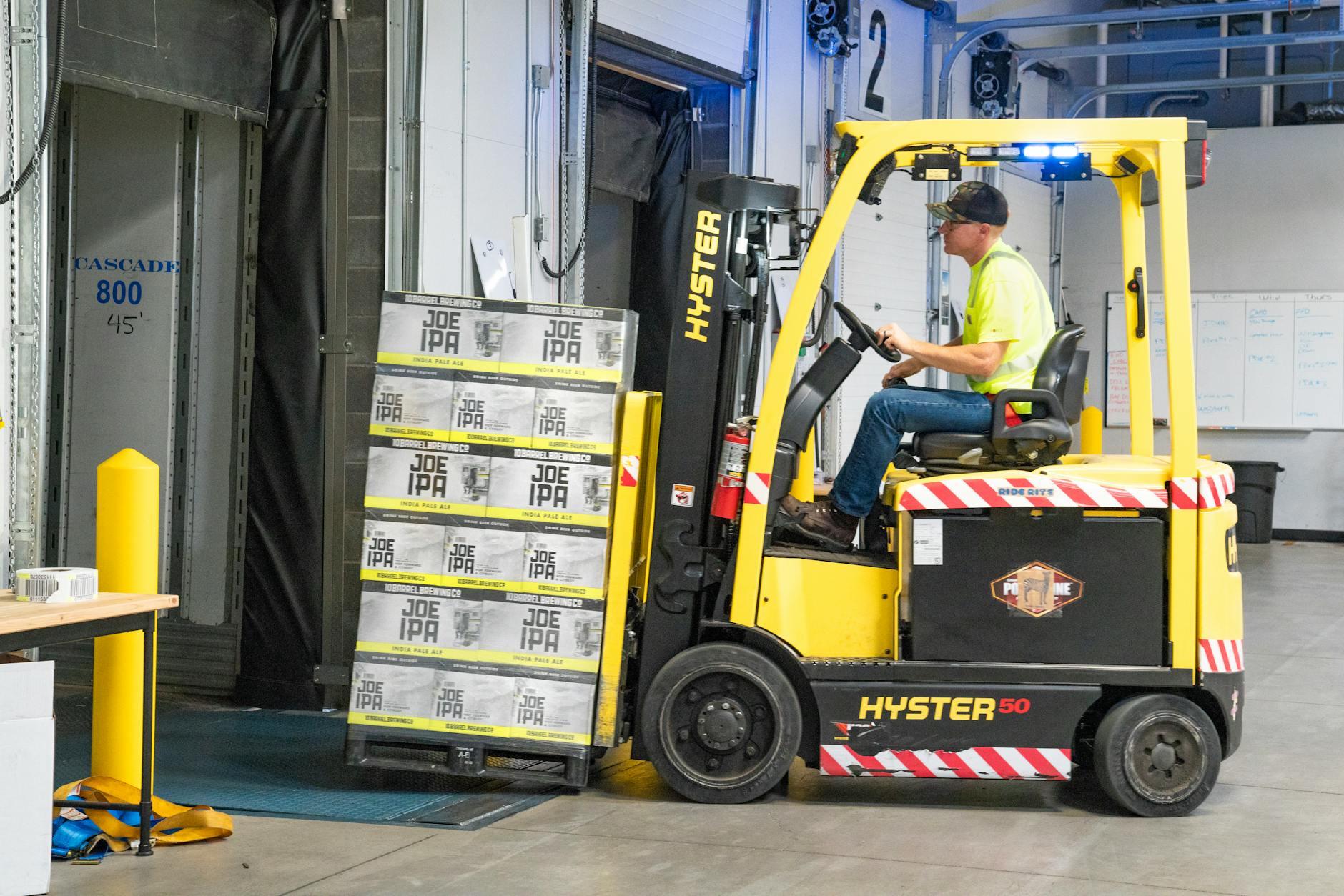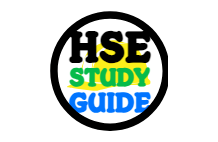
Warehouse Safety Interview Questions – Forklift, PPE, HazCom
Preparing for a warehouse safety interview? Below are 30 common questions categorized into Forklift Safety, PPE (Personal Protective Equipment), and Hazard Communication (HazCom), along with sample answers to help you succeed.
Forklift Safety Questions
1. What are the key safety checks you should perform before operating a forklift?
Sample Answer:
Before operating a forklift, I would check fluid levels (oil, hydraulic fluid, coolant), tire condition, brakes, steering, controls, lights, horn, and ensure the forks are undamaged and properly positioned.
2. How should you handle a forklift on an incline or ramp?
Sample Answer:
When driving on an incline, always keep the load uphill. If unloaded, the forks should point downhill. Never turn on a ramp, and drive slowly to maintain control.
3. What is the proper way to lift and lower a load with a forklift?
Sample Answer:
Approach the load squarely, center the forks, lift smoothly, and tilt the mast back slightly for stability. Lower the load gently, ensuring it’s secure before moving.
4. Why is it important to maintain a clear line of sight while operating a forklift?
Sample Answer:
A clear line of sight prevents collisions with pedestrians, obstacles, or other equipment. If the load blocks visibility, I should drive in reverse or use a spotter.
5. What should you do if a forklift starts to tip over?
Sample Answer:
Stay inside the cab, hold the steering wheel firmly, brace your feet, and lean away from the direction of the tip. Never jump out, as the forklift’s frame provides protection.
6. How do you safely park a forklift at the end of a shift?
Sample Answer:
Park in a designated area, lower the forks to the ground, engage the parking brake, turn off the engine, and remove the key.
7. What are the dangers of exceeding a forklift’s load capacity?
Sample Answer:
Overloading can cause tip-overs, loss of steering control, or mechanical failure, leading to injuries or damage to goods and equipment.
8. How do you handle pedestrians in a busy warehouse?
Sample Answer:
I reduce speed, use the horn at intersections, make eye contact with pedestrians, and follow designated forklift pathways to avoid accidents.
9. What should you do if you notice a forklift malfunction while operating it?
Sample Answer:
Stop using it immediately, report the issue to a supervisor, and tag it as “Out of Service” until repairs are made.
10. Why is forklift certification important?
Sample Answer:
Certification ensures operators are trained in safety protocols, reducing accidents and ensuring compliance with OSHA regulations.
PPE (Personal Protective Equipment) Questions
11. What types of PPE are commonly required in a warehouse?
Sample Answer:
Common PPE includes safety shoes, high-visibility vests, hard hats, gloves, safety glasses, and hearing protection, depending on the task.
12. Why is wearing steel-toe boots important in a warehouse?
Sample Answer:
Steel-toe boots protect feet from heavy falling objects, punctures, and crush injuries, which are common hazards in warehouse environments.
13. When should you wear high-visibility clothing?
Sample Answer:
High-visibility clothing should be worn in areas with moving equipment, forklifts, or low lighting to ensure workers are easily seen.
14. How do you ensure your PPE fits properly?
Sample Answer:
I follow manufacturer sizing guidelines, adjust straps for a secure fit, and report any ill-fitting PPE to my supervisor for replacement.
15. What should you do if your PPE gets damaged?
Sample Answer:
Stop work immediately, inform my supervisor, and replace the damaged PPE before continuing.
16. Why is eye protection necessary in a warehouse?
Sample Answer:
Eye protection prevents injuries from flying debris, dust, chemicals, or accidental splashes during handling.
17. When is hearing protection required in a warehouse?
Sample Answer:
Hearing protection is needed in high-noise areas (e.g., near machinery, loading docks) to prevent long-term hearing damage.
18. How often should PPE be inspected?
Sample Answer:
Before each use, checking for cracks, tears, or wear. Damaged PPE should be replaced immediately.
19. What are the consequences of not wearing required PPE?
Sample Answer:
It increases the risk of injuries, violates OSHA regulations, and can lead to disciplinary action or workplace accidents.
20. Can PPE be shared among workers?
Sample Answer:
No, PPE should be individually assigned for hygiene and proper fit, except for items like hard hats that can be sanitized between uses.
Hazard Communication (HazCom) Questions
21. What is the purpose of OSHA’s Hazard Communication Standard (HazCom)?
Sample Answer:
HazCom ensures employees are informed about chemical hazards through labels, Safety Data Sheets (SDS), and proper training.
22. Where can you find information about hazardous chemicals in the workplace?
Sample Answer:
On container labels and Safety Data Sheets (SDS), which are accessible in a designated HazCom binder or digital system.
23. What are the key elements of a chemical label under HazCom?
Sample Answer:
Labels must include the product name, hazard warnings, pictograms, supplier information, and precautionary statements.
24. How should you handle a chemical spill in the warehouse?
Sample Answer:
Evacuate the area if necessary, contain the spill if safe to do so, notify a supervisor, and follow SDS cleanup procedures.
25. Why is it important to read an SDS before using a chemical?
Sample Answer:
The SDS provides critical safety information, including hazards, first aid measures, handling procedures, and PPE requirements.
26. What should you do if you’re unsure about a chemical’s hazards?
Sample Answer:
Consult the SDS, ask a supervisor, or contact the EHS (Environmental Health & Safety) department before handling it.
27. How often should HazCom training be conducted?
Sample Answer:
Annually, or whenever new hazards are introduced, per OSHA requirements.
28. What are the employer’s responsibilities under HazCom?
Sample Answer:
Employers must provide training, maintain SDSs, label hazardous chemicals, and implement a written HazCom program.
29. What does the GHS pictogram for flammability indicate?
Sample Answer:
It indicates that the chemical is flammable and can ignite easily, requiring precautions like keeping it away from sparks or open flames.
30. How can employees contribute to effective hazard communication?
Sample Answer:
By following safety protocols, reporting unlabeled containers, attending training, and using PPE as required.
These questions and answers will help you prepare for a warehouse safety interview. Tailor your responses based on your experience and the specific job requirements. Good luck!
Oil & Gas Safety Interview Questions & Answers (With Examples)
OSHA 30 Interview Questions – What Employers Ask
10 IOSH Managing Safely Interview Questions with Sample Answers (+ Tips)
15 NEBOSH Interview Questions & Answers for Safety Officers
20 HSE Manager Interview Questions for Experienced Professionals with Sample Answers
























